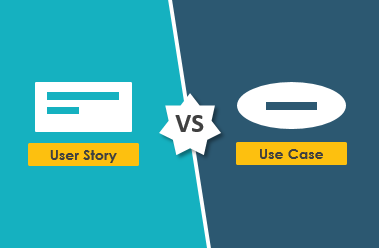User Stories vs Use Cases: Choosing the Right Technique for Your Software Development Project
In software development, user stories and use cases are two commonly used techniques to capture and describe requirements from the perspective of end-users. Although both techniques are used to describe user requirements, they have some key differences that make them suitable for different situations. In this article, we will discuss user stories vs use cases, their differences, and when to use each of them.

User Stories
User stories are a technique used to describe a user’s need or a business requirement in a simple and concise format. They are typically written in a format that follows a simple template: “As a <user>, I want <goal/desire> so that <reason/benefit>”. For example, “As a customer, I want to be able to view my order history so that I can track my past purchases.”

User stories are typically used in Agile methodologies like Scrum or Kanban, where requirements are captured in an iterative and incremental way. The goal of a user story is to capture a small, discrete piece of functionality that can be delivered in a single iteration or sprint. User stories are often written on index cards or sticky notes and are used to drive conversations between the development team and the stakeholders.
One of the benefits of user stories is that they are easy to understand and can be written by anyone, including non-technical stakeholders. They focus on the user’s needs and are written in language that is accessible to everyone. User stories are also flexible and can be easily modified or re-prioritized as requirements change over time.
However, user stories have some limitations. They don’t provide a complete picture of the system or its functionality, and they don’t describe the interactions between users and the system. They also don’t provide a clear definition of acceptance criteria or test cases.
Use Cases
Use cases are a technique used to describe the interactions between a user and a system. They typically describe a series of steps that a user takes to accomplish a specific goal, along with the system’s responses to each step. Use cases are typically written in a more formal language, using a template that includes a list of actors, preconditions, triggers, steps, and postconditions.

For example, a use case for an e-commerce website might be “Place an order.” This use case would describe the steps a user takes to place an order, such as selecting items, entering shipping information, and entering payment information. The use case would also describe the system’s responses to each step, such as verifying the user’s information, calculating the order total, and generating a confirmation email.
Use cases are often used in more traditional software development methodologies like the Waterfall model, where requirements are captured upfront and analyzed in detail before development begins. Use cases provide a more complete and detailed picture of the system’s functionality and can be used to generate detailed test cases and acceptance criteria.
However, use cases have some limitations. They can be difficult to understand for non-technical stakeholders, and they can be time-consuming to develop and maintain. They also focus on the interactions between users and the system, rather than the user’s needs and goals.
User Stories vs Use Cases: When to Use Each
User stories and use cases are both useful techniques for capturing requirements, but they are suited for different situations.
Use user stories when:
- You want to capture the user’s needs and goals in a simple, easy-to-understand format
- You are using Agile methodologies like Scrum or Kanban
- You want to prioritize requirements based on the user’s needs
- You want to encourage collaboration and conversation between the development team and stakeholders
- You want to focus on delivering small, incremental pieces of functionality
Use use cases when:
- You want to capture a detailed picture of the system’s functionality
- You are using a more traditional software development methodology
Summary
user stories and use cases are both valuable techniques for capturing and describing requirements from the perspective of end-users. While user stories are useful for capturing user needs and goals in a simple and easy-to-understand format, use cases provide a more detailed picture of the system’s functionality and interactions with users. Choosing which technique to use depends on the specific project and development methodology being used. Ultimately, both techniques can help ensure that the software developed meets the needs of its end-users, resulting in a more successful product.

